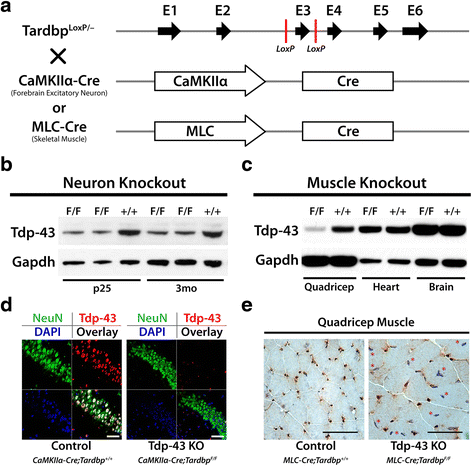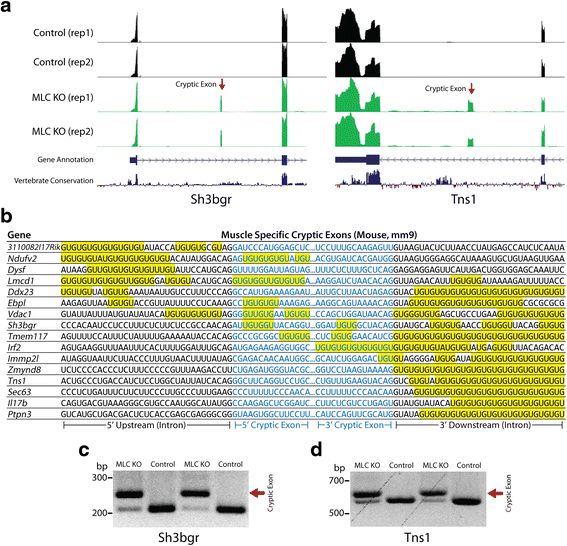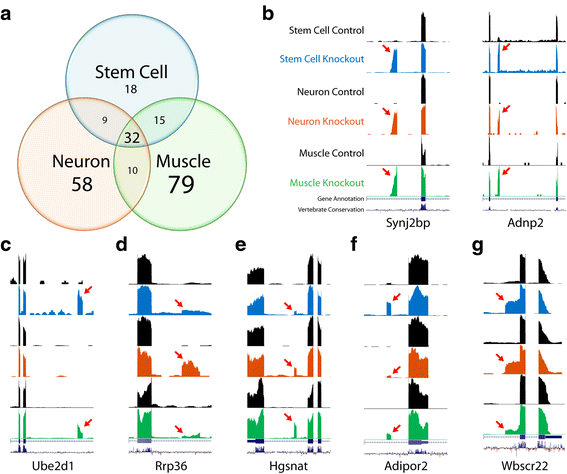Tdp-43 cryptic exons are highly variable between cell types
- PMID: 28153034
- PMCID: PMC5289002
- DOI: 10.1186/s13024-016-0144-x
Tdp-43 cryptic exons are highly variable between cell types
Abstract
Background: TDP-43 proteinopathy is a prominent pathological feature that occurs in a number of human diseases including amyotrophic lateral sclerosis (ALS), frontotemporal dementia (FTD), and inclusion body myositis (IBM). Our recent finding that TDP-43 represses nonconserved cryptic exons led us to ask whether cell type-specific cryptic exons could exist to impact unique molecular pathways in brain or muscle.
Methods: In the present work, we investigated TDP-43's function in various mouse tissues to model disease pathogenesis. We generated mice to conditionally delete TDP-43 in excitatory neurons or skeletal myocytes and identified the cell type-specific cryptic exons associated with TDP-43 loss of function.
Results: Comparative analysis of nonconserved cryptic exons in various mouse cell types revealed that only some cryptic exons were common amongst stem cells, neurons, and myocytes; the majority of these nonconserved cryptic exons were cell type-specific.
Conclusions: Our results suggest that in human disease, TDP-43 loss of function may impair cell type-specific pathways.
Keywords: Amyotrophic lateral sclerosis; Bioinformatics; Frontotemporal dementia; Inclusion body myositis; TDP-43 –Nonconserved cryptic exons.
Figures




References
Publication types
MeSH terms
Substances
Grants and funding
LinkOut - more resources
Full Text Sources
Other Literature Sources
Miscellaneous

